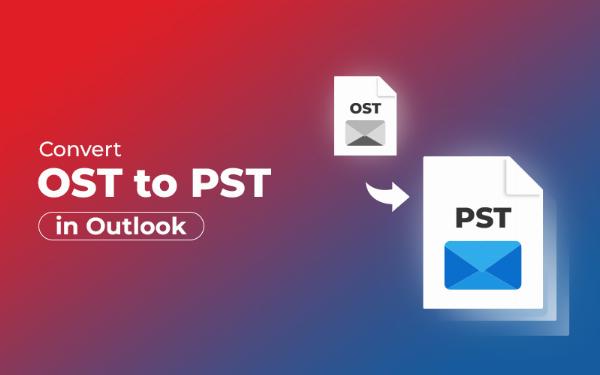Overcoming Salesforce API Limits in Large-Scale Integrations

Strong 8k brings an ultra-HD IPTV experience to your living room and your pocket.
Salesforce is a powerful and versatile Customer Relationship Management (CRM) platform that has become a cornerstone for many businesses. However, as with any robust system, there are certain limitations that users must navigate to maintain optimal performance. One such limitation is Salesforce's API limits, which can pose significant challenges in large-scale integrations. For organizations relying on seamless data exchange between Salesforce and other systems, understanding and managing these API limits is crucial to ensure the smooth operation of integration processes.
In this blog, we will delve into the common types of Salesforce API limits, their potential impact on large-scale integrations, and strategies to effectively manage these limits.
Understanding Salesforce API Limits
Salesforce imposes API limits to maintain system performance and stability across its multi-tenant environment. These limits are designed to prevent any single customer from consuming excessive resources, which could negatively impact other users. Salesforce API limits can generally be categorized into three types:
Concurrent API Request Limits
These limits control the number of simultaneous API calls that Salesforce can process from an organization. Exceeding these limits can result in delays as additional requests are queued or rejected until the system can process them.
API Timeout Limits
Salesforce sets a maximum duration for API calls to prevent long-running processes from consuming excessive resources. If an API call exceeds this duration, it will timeout, potentially leading to incomplete operations.
Total API Request Allocations
This limit defines the overall number of API calls an organization is allowed within a specific 24-hour period. Once this threshold is reached, additional API requests may be blocked until the limit resets.
Exceeding any of these API limits can result in API errors, degraded performance, and even potential system instability. For large-scale integrations, where hundreds or thousands of API calls might be made in a short period, managing these limits becomes a critical aspect of the integration strategy.
The Impact of API Limits on Large-Scale Integrations
In large-scale integrations, where Salesforce is often one of several interconnected systems, the impact of API limits can be significant:
Integration Delays
When concurrent API request limits are exceeded, subsequent API calls are either delayed or rejected. This can lead to delays in data processing and synchronization, which can be particularly problematic in real-time or near-real-time integration scenarios.
Data Inconsistencies
API timeouts can interrupt the flow of data between systems, resulting in incomplete data transfers. This can cause inconsistencies between Salesforce and other integrated systems, potentially leading to data quality issues.
System Instability
Frequent API errors, often a result of hitting API limits, can disrupt the overall integration process. This not only affects the immediate data exchange but can also have cascading effects on business operations, especially if critical processes are dependent on the integration.
Strategies for Managing Salesforce API Limits
To effectively handle Salesforce API limits in large-scale integrations, it's important to implement strategies that optimize API usage, ensure data integrity, and maintain system stability. Here are several approaches to consider:
1. Optimize API Calls
Reducing the number and size of API calls is the first step in managing API limits:
- Bulkify API Calls: Salesforce's Bulk API allows you to process large volumes of data with fewer API calls. By combining multiple records into a single API call, you can significantly reduce the total number of requests, helping you stay within your allocated limits.
- Reduce Data Volume: Minimize the amount of data transferred in each API call by filtering out unnecessary fields and only selecting the data you need. This not only conserves API call limits but also improves the efficiency of the data transfer.
- Efficient Querying: Optimize your SOQL (Salesforce Object Query Language) queries to retrieve only the data necessary for your operation. This reduces the load on Salesforce’s servers and helps avoid unnecessary API consumption.
2. Implement Batching and Queuing
Managing the flow of data through batching and queuing mechanisms can help prevent API limit issues:
- Batch Processing: Divide large datasets into smaller, more manageable batches that can be processed within the API limits. This ensures that large-scale data transfers don’t overwhelm Salesforce’s API capabilities.
- Message Queues: Implement message queues to decouple systems and handle API requests in a more controlled manner. Queues can help manage API request rates and ensure that calls are processed within the available limits.
- Error Handling: Incorporate robust error-handling mechanisms that can automatically retry failed API calls. This helps prevent data loss and ensures that critical operations are completed even when initial API calls fail due to limits.
3. Leverage Asynchronous Processing
Asynchronous processing techniques can help manage API limits by offloading long-running tasks:
- Background Jobs: Offload long-running or resource-intensive processes to background jobs using Salesforce’s Asynchronous Apex or Scheduled Jobs. This helps avoid hitting API timeouts by moving these processes out of the real-time flow.
- Event-Driven Architecture: Use an event-driven architecture to trigger asynchronous processes based on changes in Salesforce data. This allows you to process data changes efficiently without overwhelming the API limits.
4. Monitor and Analyze API Usage
Continuous monitoring of API usage is essential for proactively managing limits:
- API Usage Tracking: Regularly monitor API call volumes, error rates, and response times. Salesforce provides tools like the System Overview page and Event Monitoring to help track API usage and identify potential issues before they become critical.
- Performance Optimization: Analyze API performance data to identify bottlenecks and opportunities for optimization. By understanding how and when your API calls are being made, you can make informed decisions to improve overall integration efficiency.
5. Consider Salesforce Alternatives
In some cases, reducing reliance on Salesforce APIs altogether might be the best approach:
- Data Replication: Consider using data replication tools to synchronize data between systems without relying heavily on APIs. This can be particularly useful for keeping data in sync between Salesforce and other databases or systems.
- Change Data Capture (CDC): Utilize Salesforce's Change Data Capture feature to efficiently transfer only the modified data between systems. This reduces the volume of data processed by the API and helps stay within the API limits.
Conclusion
Managing Salesforce API limits is essential for the success of large-scale integrations. By carefully planning and implementing the strategies outlined above, you can optimize API usage, improve performance, and ensure the reliability of your integration processes. Whether it's through optimizing API calls, leveraging asynchronous processing, or exploring alternatives like data replication, each strategy plays a vital role in maintaining the smooth operation of your integrations.
If you're facing challenges with Salesforce API limits or need assistance with large-scale integrations, consider partnering with a Salesforce integration consultant to navigate these complexities and achieve your integration goals.
Also read: Implementing Salesforce Security Best Practices
Note: IndiBlogHub features both user-submitted and editorial content. We do not verify third-party contributions. Read our Disclaimer and Privacy Policyfor details.







